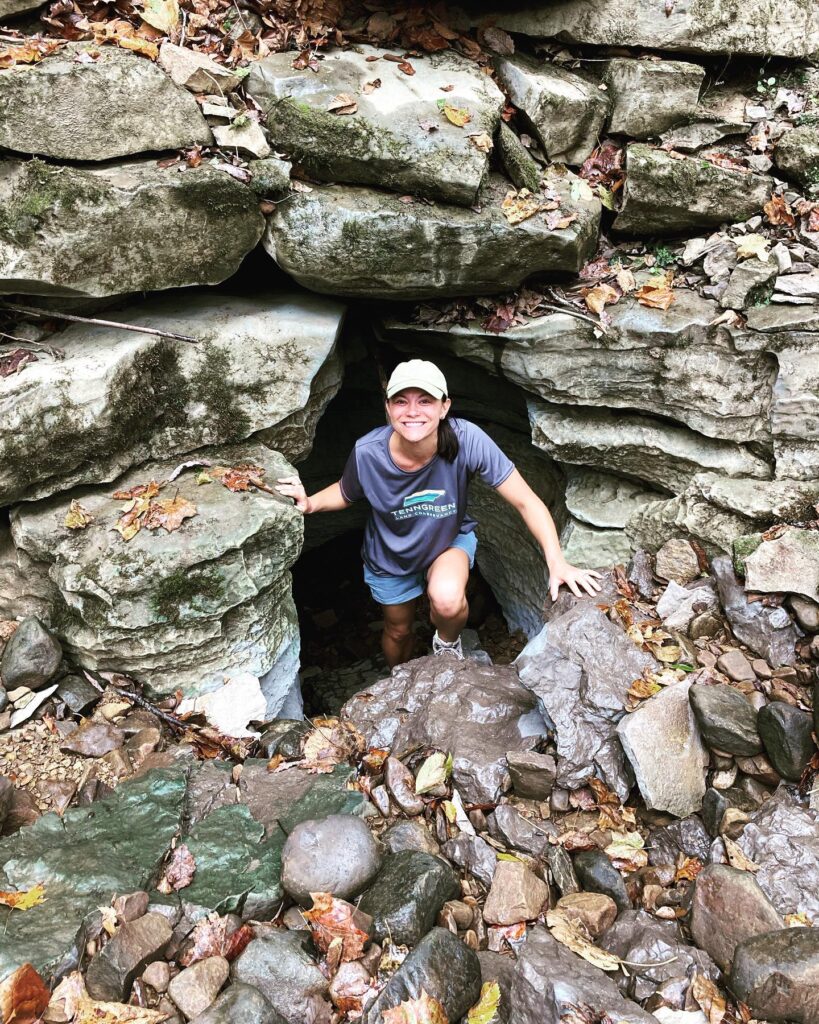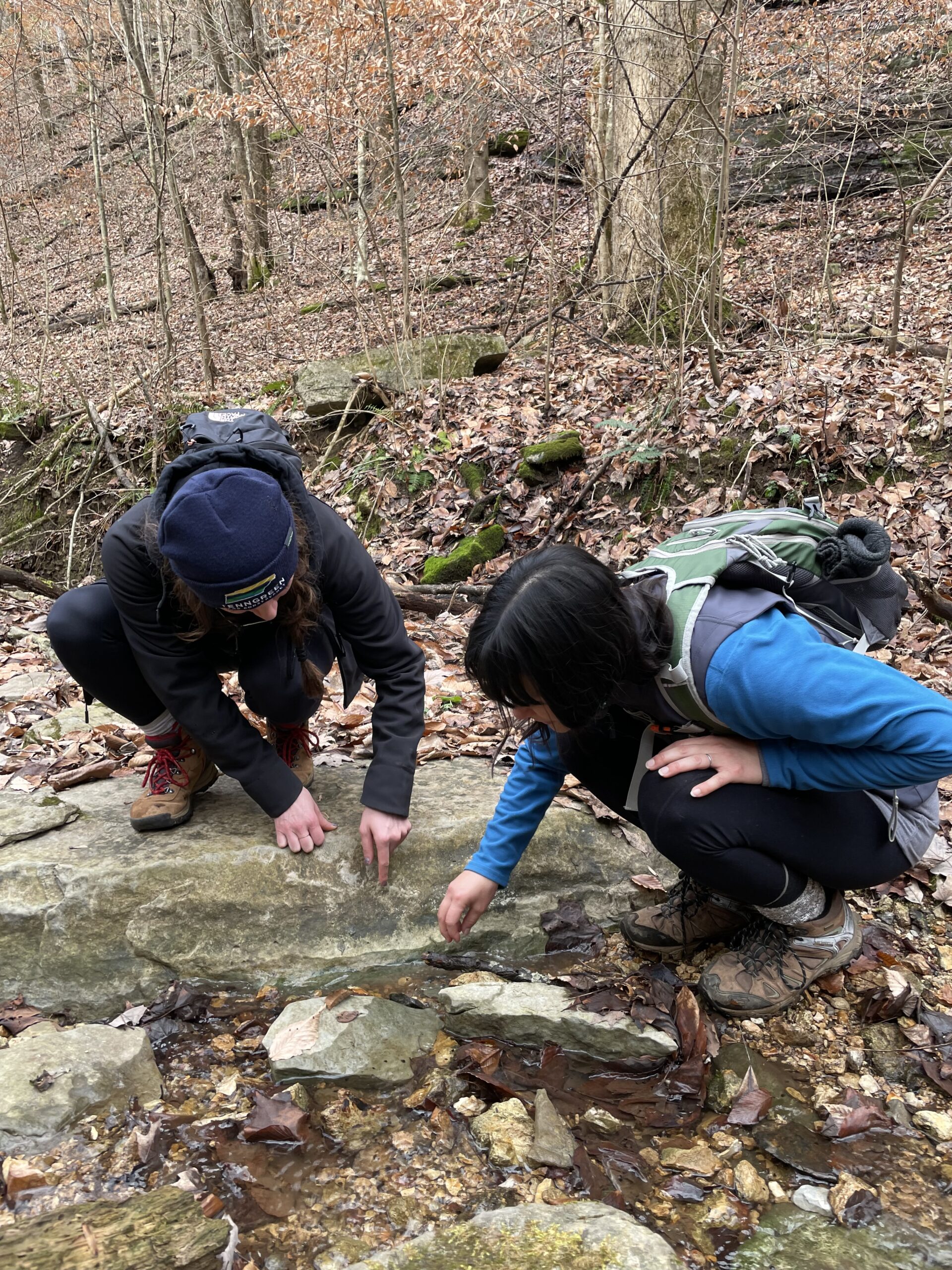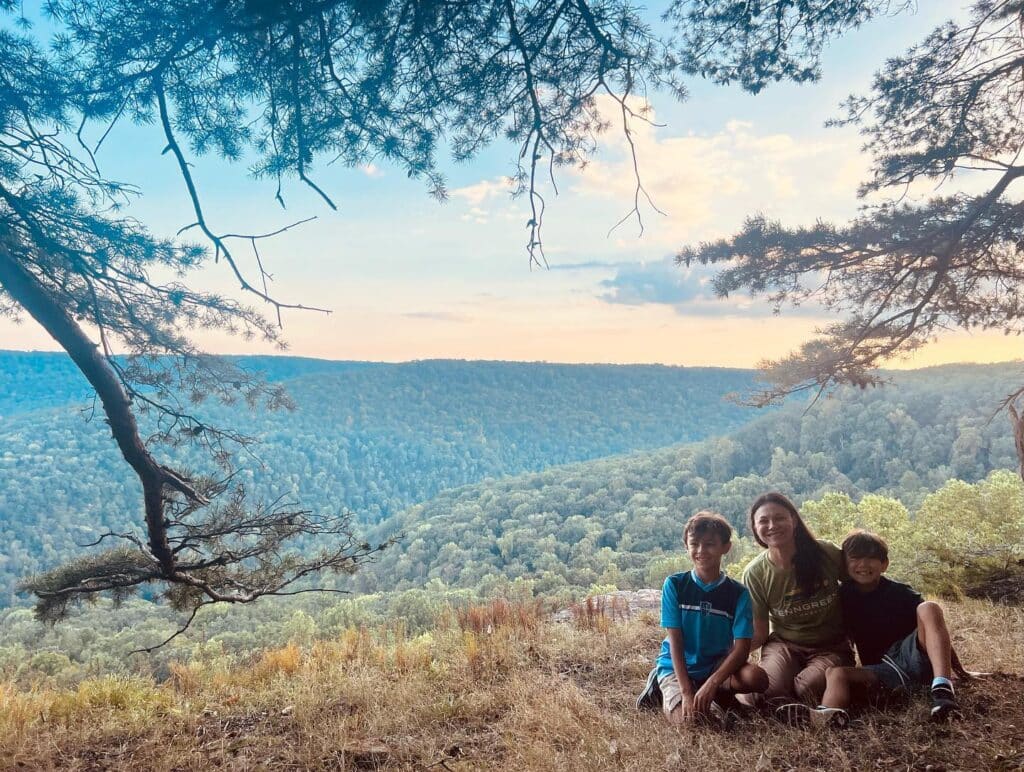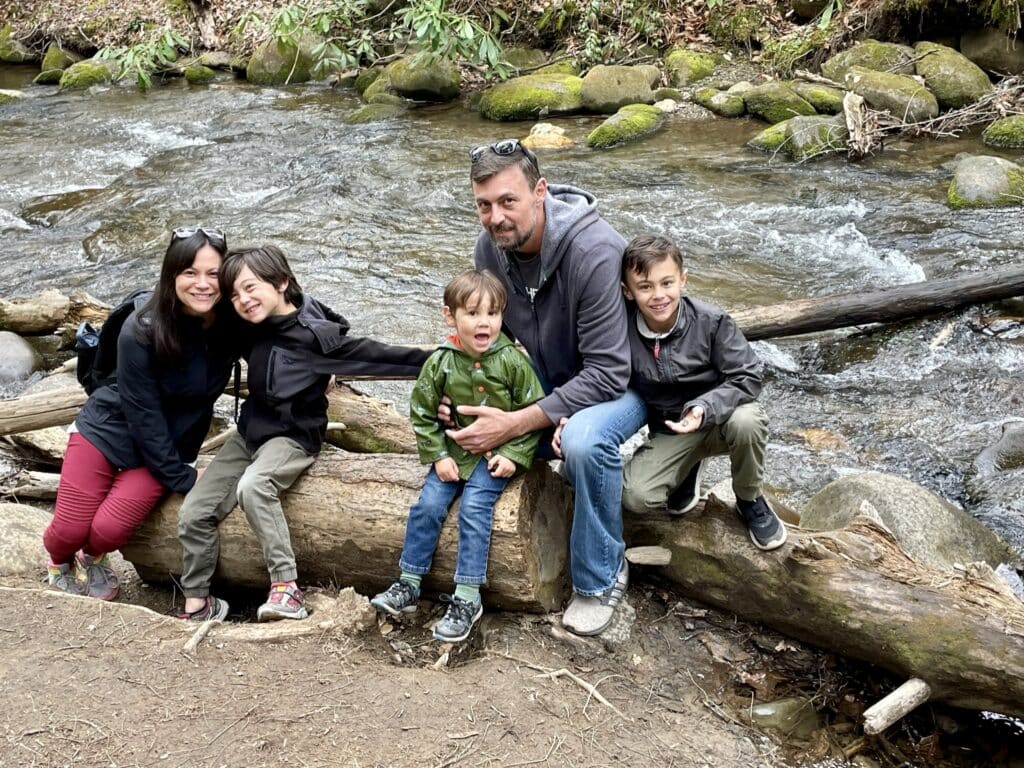Staff Spotlight: Nichole Hidalgo Jordan, Development Officer

We sat down with Nichole Hidalgo Jordan to learn more about why and how she’s dedicated her whole life to protecting and exploring Tennessee’s natural lands. Nichole celebrated her three-year anniversary as a Development Officer with TennGreen Land Conservancy in September 2024.
Tell me about yourself. What led you to TennGreen?
Nichole: I grew up in a very rural part of our state—Estill Springs in Franklin County. As a kid, I played outside a lot. I didn’t grow up with siblings; so, the trees, the frogs, the birds, and the turtles were my friends. They gave me an outlet in which to use my imagination. My neighbor Kathryn and I explored the woods. We made forts from old deer stands; we climbed under barbed wire fences; we ran through muddy creeks. We played outside until our parents said it was time to come home. I am so grateful I had these formative experiences because now the air, water, and soil of Estill Springs are part of me.

I attended St. Andrews in Sewanee from 7th to 12th grade, and they utilized nature-based experiential learning. My sophomore year of high school, I took Intro to Ecology, where we used coverboard plots to monitor the salamanders on campus. Turning over those boards and finding slimy salamanders hiding underneath made me squeal with excitement! Which made them slither away, and we couldn’t study or photograph them like we were supposed to… (Sorry, Mr. Ramsey.) St. Andrews gave me another outlet for my outdoor-loving self.
I went on to study Animal Science with a minor in Wildlife & Fisheries at the University of Tennessee Knoxville, and I interned with the Knoxville Zoo for about one year. I realized along the way that I wanted to focus on the native flora and fauna of Tennessee instead of exotic zoology. When I graduated, I moved back to Middle Tennessee and worked with many different groups: I was a seasonal naturalist at Warner Parks Nature Center, I was a field trip guide for the Tennessee Wildlife Federation, I did two seasons at Radnor Lake State Park, and I spent many years working in Murfreesboro for Parks and Recreation at the Wilderness Station. My love for Tennessee’s natural landscapes grew and grew.
“The air, water, and soil of Estill Springs are part of me.” — Nichole Hidalgo Jordan, TennGreen Land Conservancy Development Officer

However, after my husband and I decided to have kids, I needed a career change. I was working outside all the time with other people’s children, and when I got home from work, I found that I did not have the energy to play outside with my own children. There was an opportunity at the Webb School in Bell Buckle, TN. Because I attended a small, private, independent school a lot like Webb, I understood the benefits of this institution. So, I got the job working in the Alumni Development Office, visiting alumni around the country and asking them to support the school and help impact its longevity. This position was my first introduction to Development, and it came naturally to me.
And then life happened: I had another baby, so I decided to take a break, and I spent a lot more time outside with my kids amidst the global pandemic. Finally, TennGreen happened at just the right time; I was ready to go back to work when I discovered the job opportunity. Being a Development Officer at TennGreen, I’m able to combine my years-long naturalist skills with my aptitude for development.
A Tennessee native, never having lived anywhere else, I’ve witnessed our state evolve and our natural resources disappear. I’m drawn to TennGreen’s work because what we do—conserve land where people and nature can thrive—truly protects our state’s natural assets that we simply cannot replace.
Walk me through a day in the life as a Development Officer at TennGreen.
Nichole: Development is all about building relationships. Yes, development includes fundraising, and fundraising is a critical component, but it’s so much more than just asking for money. Nonprofit development is a multi-pronged effort to advance an organization’s longevity, impact, and mission. I serve as a conduit between our donors and the organization. I build relationships on behalf of TennGreen—helping individuals, other organizations, and businesses understand TennGreen’s role in conservation and why it’s so essential.
Every day is unique as a Development Officer. Oftentimes I’m meeting folks for coffee, sharing maps of our most recent projects. Other times I’m in the field with donors and sponsors, exploring those projects sharing the beauty of that property. I also spend time on the phone each week thanking our donors for their support and sharing updates about land acquisitions and conservation easements. I spend a lot of time planning and thinking about how to demonstrate to our donors how their support makes our work possible.
On a given day, you can find me anywhere between Memphis and Johnson City. I might be on the trail or at a Rotary Club presentation. Or maybe I’m at my desk in Nashville, writing a grant. Or I might be at a boothing event, teaching folks about our Hike-a-Thon. I spend the majority of my time with folks who care about our work and want to see TennGreen succeed. It’s incredibly rewarding, and I am very grateful.
What inspires you?
Nichole: The summer before I graduated from UT Knoxville, I was a seasonal summer interpreter at Warriors’ Path State Park, near Kingsport. I lived in a tiny cabin in the park and I led three educational programs a day! There, I learned so much from Marty Silver, who is still a Ranger today. He is a wealth of knowledge when it comes to our natural world: Everything from keeping track of when the paw paw trees bloom, when they fruit, and how many fruits each tree produces. I was fascinated by his science and studies.
I’m, of course, inspired by our state’s beauty and biodiversity. I’m inspired my by my coworkers who love the outdoors just as much as I do,

And I’m most inspired by my three boys, Tate, Miller, and Carter. They spend time in our backyard just like I did. Their love for nature inspires me and makes me incredibly happy to be doing this type of work. I love raising my kids in the same place that gave me so much joy. We go to my parents’ house about once a month, and they run in the same muddy creeks that I did.
What do you do in your free time?
Nichole: After a day’s work TennGreen, I love playing outside with my kids. Just last night, we all went on a bike ride in our neighborhood—even the youngest one. He has a little tricycle. I also enjoy cooking and dining out with my husband. We both love trying different types of food!
What has been your greatest challenge?
Nichole: My greatest challenge at TennGreen has been learning the mechanics of how land conservation works. Before joining TennGreen, I knew very little about real estate. To be honest, I’m still learning!
[To learn more about conservation easements, click here!]
And choosing a career in which one is so passionate can make it hard to disconnect. Especially in the field of conservation on a planet that is experiencing global climate change. This has become more poignant to me as I raise my own children.
What career life advice do you have for other conservationists, especially those who identify as women or mothers?

Nichole: A lot of folks who consider themselves conservationists want to make a difference. I know I’ve always had that desire to affect positive change in the name of our environment, no matter the personal cost or sacrifice. But you must prioritize your mental and physical health. We’re better equipped to take meaningful action and make a lasting difference if we are healthy.

Take the time to figure out your strengths in the workplace. What is it that you feel you do well? Have patience with yourself. I worked many part-time jobs before finding the “right” full-time career, and I often lost sight of the present. It took me longer than your average college graduate to find my niche, but all good things take time. Your career will eventually work out the way that it’s supposed to. When it does, you’ll find that happy medium between your career and your personal life, whatever that looks like for you.
It’s difficult being a working mother with three boys aged 11 and under. I try my best to focus on being intentional with my time at work, so that when I’m home with my family, my focus is on my family. Because I know I’ve done my best at work. But in the field of conservation, we read about global climate change and urban development, and it’s hard to disconnect. I must remind myself: Our jobs are just one part of who we are and don’t make up our whole.
Want to work with Nichole and support TennGreen’s work across Tennessee? Send her an email at nichole@tenngreen.org.


